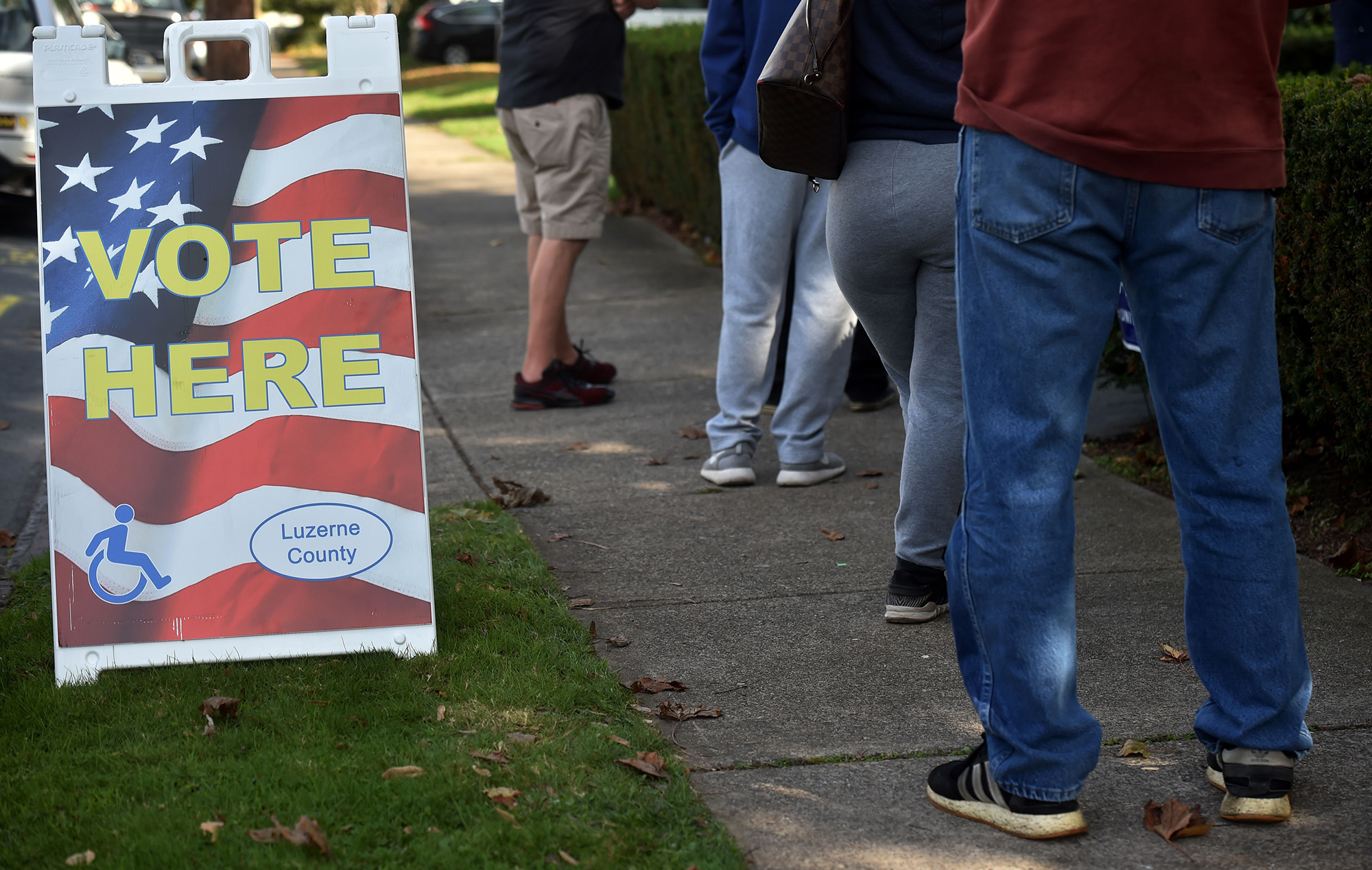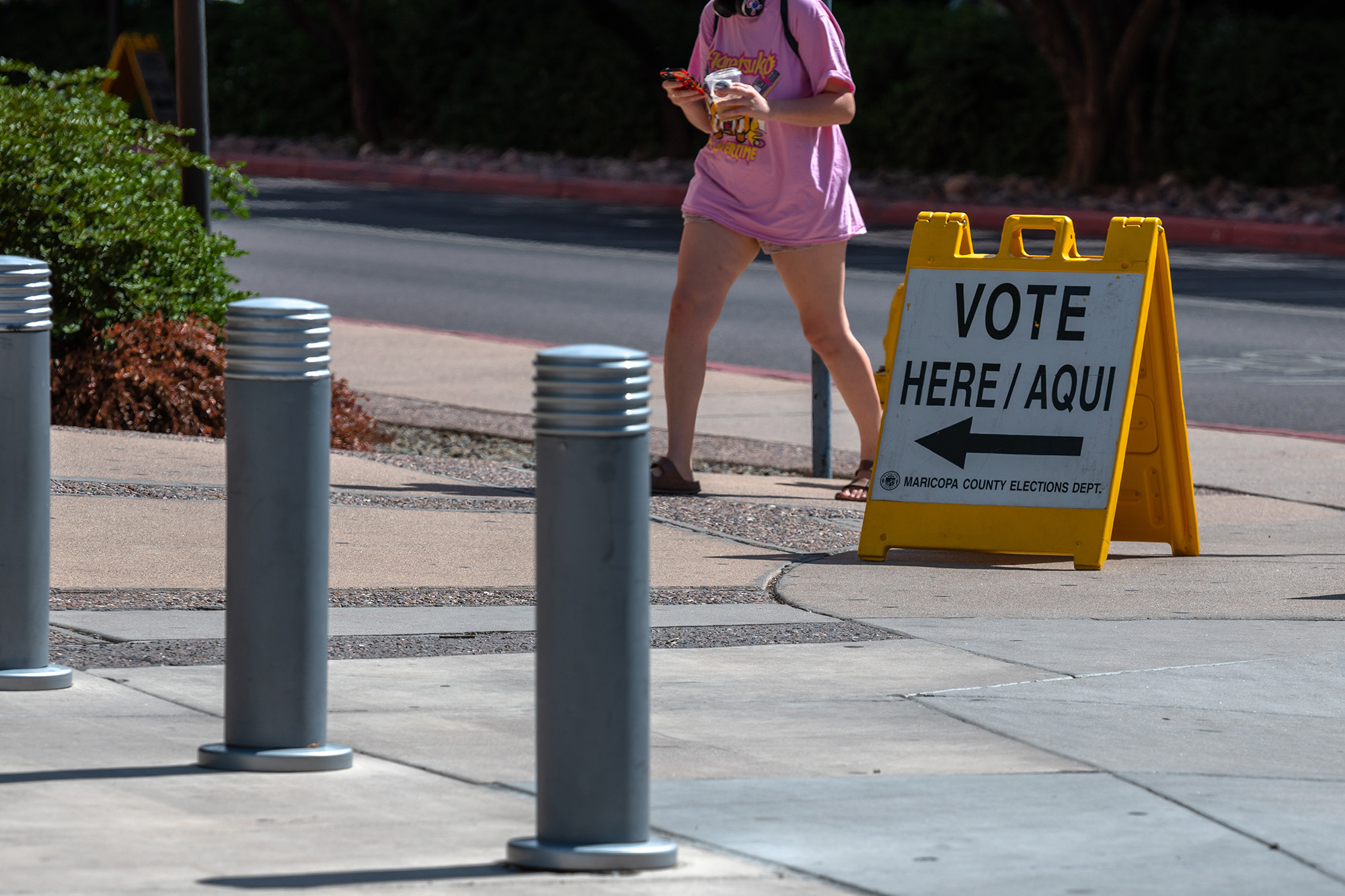Early election night results might not indicate final tallies (and why that's OK)
A "red mirage," or an artificial GOP vote lead, will likely reoccur Tuesday.
As early Election Day results come in on Tuesday, it will likely appear that a Republican candidates vying for any number of the federal or statewide races appear to be leading their Democratic opponents, even by large margins.
Their leads will dwindle, or crumble completely, after perceived "dumps" of votes are recorded by state election officials who count mail-in and absentee ballots in the days -- or even weeks -- following Election Day.
This phenomenon was popularized as the "red mirage" or the "blue shift" after the 2020 presidential election, when former President Donald Trump took a deceptive lead in several competitive states on Election Day due to delays in counting of Democrats' mail-in ballots -- their preferred method of voting due to the COVID-19 pandemic -- only to eventually dissipate when the entire reserve of votes was totaled.
The illusion was a principal component of Trump and his allies' false claims that the contest was fraudulent upon his ultimate loss to Joe Biden.

Why and where might we see a 'red mirage'
This is likely to occur again on Tuesday, according to election experts, because of the same cocktail of factors that led to a "red mirage" in 2020: Democrats have continued to use mail-in voting more than their Republican counterparts, while some of the same decisive states will take a longer time to tally their mail-in, absentee and provisional ballots due to state laws that prohibit their count until late stages in the electoral process.
And it's likely to occur in some of the same states where the phenomenon presented itself last cycle -- in states like Pennsylvania, Michigan and Wisconsin -- battleground states that also happen to feature some of the most hotly-contested races of the election season.
"All signs point to the fact that it's going to be extreme in certain critical states again, and Pennsylvania top among them," Lawrence Norden, senior director of the Brennan Center's Elections & Government Program said, noting that certain candidates may claim false victories or legally attempt to stop or slow vote counts.
"I am very worried. I'm very worried that election denial forces are much more organized than they were in 2020."
Every state canvasses vote counts at a different pace, and one of the foremost causes of delayed completion of the unofficial count in 2020 is that some states didn't even allow the processing of mail-in ballots until polls are closed on Election Day.
That was the case in Pennsylvania and Wisconsin, and despite asks from bipartisan election officials for their legislatures to change state laws to make tallying votes easier and earlier, ballots still cannot be counted until after 8 or 9 p.m. on Nov. 8. In Pennsylvania, counties will participate in "marathon counting," meaning that they can start processing votes at 7 a.m. on Election Day, but counting still must begin at 8 p.m.
In Michigan, officials can process ballots just two days ahead of Election Day. And while canvassing laws have remained the same in some states, expanded mail-in voting access stands permanent, even after serious threats of the pandemic.

Counting of mail-in ballots
"A lot of states are expanding the rights to vote by mail, but they have not expanded as much the ability of states to do the canvassing and especially in pre-canvassing of mail-in votes," said David Alexander Bateman, an associate professor of government at Cornell University.
They're different from places like Florida, where election officials not only process mail-in ballots before Election Day, but release counts within 30 minutes of poll closings.
In places like Arizona, which also begins processing absentee votes before Election Day, the sheer number of people who use mail-in ballots make processing time lag. More than 3 million Arizonans have requested mail-in ballots this cycle, according to the U.S. Elections Project. According to the Arizona Secretary of State's office, there are over 4.1 million registered voters.
Experts expect election denialism, legal challenges
"In some states the numbers are so huge, like in Arizona, in terms of the number of people that are voting by mail. And though they have a head start, it's not enough of one, so the counting is going to take a little bit longer," Norden said.
Late mail-in ballots received in 2020 skewed more Republican than earlier ballots in Arizona, so a "blue mirage" might lead votes to toggle in 2022 -- initially skewing Democratic, before adding Election Day and late arriving mail voters which could swing the vote toward the GOP.
The shift in vote totals doesn't always favor Democrats. About 90 minutes after polls closed in Iowa, North Carolina and Ohio, FiveThirtyEight reports, Biden looked competitive in these three states -- he even led in North Carolina and Ohio. But that changed as officials reported more results, and Trump wound up carrying all three states.
"I think it's important to make clear like nobody's winning or losing on Election Day. The votes are all in, for the most part, it's just a question of what states chose to count and when," Norden said.

Bateman agreed: "Just as football games do not end at the first quarter, you play out the game and it ends when the game ends. And whoever's in the lead at the end of the game wins. It's the same with elections. An election does not end, and it has ever ended on Election Day."
Nearly 21 million voters have returned mail ballots so far this election, according to the University of Florida's Michael McDonald, an expert on American elections who is tracking early voting numbers, while over 57 million have requested mail-in ballots.
For the second straight election cycle, Democrats have been casting their ballots through mail-in voting methods much more than Republicans -- a trend that presented itself in 2020 when COVID presented a clear danger to voting in-person at crowded polls.
According to the U.S. Elections Project's analysis of states that report party registration data, Democrats requested more than 6 million more mail-in ballots this election cycle than Republicans.
Before the last election, there was little partisan slant between who voted by mail, with Republicans -- who tend to be older voters -- usually preferring the method.
"A lot more people are using mail-in ballots, and those people are now, for the first time, those using them are disproportionately Democrats," Bateman said.
After the polls closed on Election Night in 2020 and then-President Trump began claiming that mail-in voting was "rife with fraud," as his early lead diminished, Republicans have even less incentivized to cast mail-in ballots, the election experts said.
In Pennsylvania, where Trump preemptively claimed victory in 2020 after declaring that the counting of ballots in Philadelphia and other places across the state be stopped, about 1.4 million voters have requested mail-in ballots this year, a number lower than the 2.8 million requested in the last election, but much higher than years prior.
Norden said he's "absolutely" expecting election denialism similar to claims circulated in 2020 to happen in states like Pennsylvania again, and perhaps more filing of legal action aimed at stopping the processing of mail-in and early votes. In 2020, Trump and his allies filed lawsuits to halt the counting of ballots in Michigan and Pennsylvania. In Nevada, home to another Senate race that could determine the balance of power in Congress, the current GOP nominee, Adam Laxalt, filed numerous lawsuits after the presidential election in 2020, attempting to stop the counting of ballots in Clark County.
Laxalt told radio host Wayne Allyn Root in the days after officially announcing his candidacy that he planned to construct a team to "come up with a full plan, do our best to try to secure this election, get as many observers as we can, and file lawsuits early, if there are lawsuits we can file to try to tighten up the election."
"Frankly, there's been signals from some of the election deniers already that they're going to claim that the count should stop on election night," Norden said.
Al Schmidt, the sole Republican on the Philadelphia County Board of Elections who had seen the canvassing of ballots in 2020 and later testified before the House committee investigating the Jan. 6 attack, wrote an op-ed on Friday in the Pennsylvania Capitol Star.
Schmidt warned Pennsylvania to again expect some shifting of the unofficial vote tallies, which isn't indicative of anything nefarious.
"Most of the in-person results from polling places should be posted before midnight, but because county officials can't begin processing mail-in ballots until 7 a.m. on Election Day, a significant portion of the vote cannot be published until later at night or the following days," he wrote.
"And because more Democrats than Republicans use mail-in ballots (another consequence of partisan misinformation), most of the votes published later will go toward candidates of one party. This "blue shift" or "red mirage" has occurred election after election and is not indicative of anything untoward or suspicious," he said.
ABC News' Deputy Political Director Averi Harper contributed to this report.




